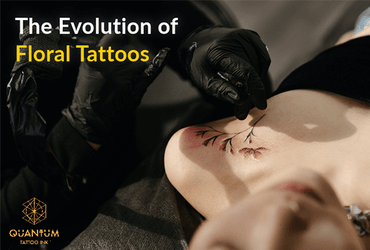The Evolution of Floral Tattoos
Oct 17th 2023
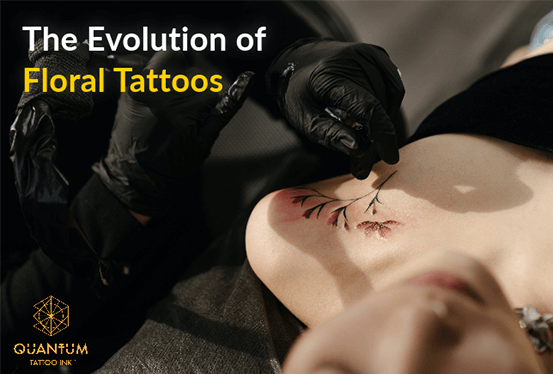
One of the most iconic subjects for tattoos throughout recent history is the rose. Rose tattoos specifically and floral tattoos, in general, have adorned the bodies of tattoo aficionados for centuries. Though styles and trends have changed over time, flowers remain a staple of the tattoo world. From the flash tattoos chosen by first-timers to large and elaborate custom pieces, floral tattoos have been central to the art form. But how have rose and floral tattoos evolved throughout history? Let’s explore.
The Early History of Floral Tattoos
Ancient Egyptians, some of the earliest adopters of the art of tattooing emphasized natural themes in their art. The lotus flower was a particularly important icon to ancient Egyptians. Symbolizing creation and rebirth, the lotus was central to their religion and culture. Because it was such a common theme for artwork in a period when tattooing was popular, it stands to reason that the lotus flower may have also been a common theme for the art of tattoos.
Outside of Egypt, tribal tattooing often includes flowers as tribal symbols or as symbols of beauty and love. These themes were strongly reflected again in the tribal tattoo trends of the 1990s.
For both Egyptians and other ancient cultures, these floral tattoos were monochromatic and created with brown, blue, or black tattoo ink made from ash and other natural ingredients. Outlining and shading as we know them today would not come around for several centuries.
American Traditional Period and the Rose Tattoo
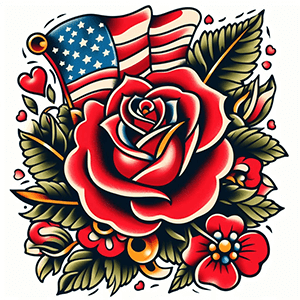
By the 18th century, tattoos had been popular in many areas of the world for centuries, including Asia and the Pacific. However, the first tattoos in Western culture were not documented until the 1700s. At that time, Captain James Cook documented sailors returning home from travels throughout the Pacific bringing home souvenirs in the form of tattoos. While the trend took a while to become more mainstream, by the 1800s sailors in America and Britain began using tattoos as a symbolic form of self-expression. It was during this period that the iconic American traditional rose tattoo was born.
World War II saw tattoos gain even more popularity among men going overseas. Even women who stayed home waiting for their sweethearts started getting tattoos to symbolize their love. Again, rose and floral tattoos became a common theme. During this time period, Sailor Jerry popularized tattoos with simple designs, black outlines (with that distinct fade-to-blue), and a limited color palette, including the very popular red tattoo ink. The red rose tattoo became a symbol of the sweethearts waiting for their sailors to return from their voyages. For that reason, rose tattoos done with red tattoo ink became an everlasting symbol of love and loyalty.
Neo-Traditional Flowers
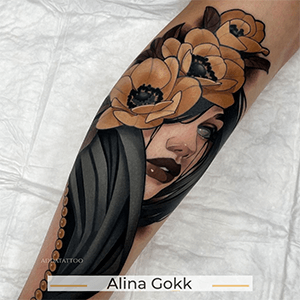
For decades, tattoo styles remained mostly unchanged until the 1970s. This time period saw the introduction of disposable needles, improvements in tattoo technology, and an expansion of the available tattoo ink color palette. These changes led to the development of the neo-traditional tattoo style that combined elements of Japanese irezumi tattoo, American traditional tattooing, art nouveau, and art deco.
While these tattoos still used black outlines and a few select colors, some shading was introduced to add dimension. The color palette also expanded significantly to include new colors. Warm autumn colors like browns, oranges, and yellows were introduced. Muted mauve tones of pink tattoo ink were also introduced at this time. Today, the neo-traditional tattoo style incorporates even more options like slightly more vibrant pink tattoo ink and purple tattoo ink.
The Return of the Rose in Chicano Tattoo Culture
Though tattoos were popular in Los Angeles Chicano culture as early as the 1943 Zoot Suit Riots, the 1970s and 1980s saw a resurgence of this unique LA style of tattooing. Iconography included religious themes, the popular “smile now cry later” masks, a distinct lettering style, and of course, the rose. This style usually adhered to black and gray outlines and shading, though the use of some color was seen.
Realism and the Floral Tattoos of Today
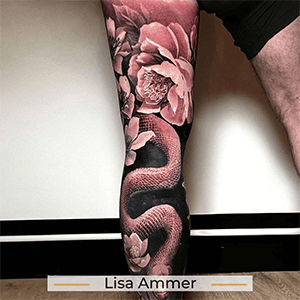
Today, developments in technology and improvements in techniques have made tattoos increasingly realistic. Artists also have more color options than ever before, from highly pigmented traditional black tattoo ink to pastel shades of pink tattoo ink and purple tattoo ink. These advances allow artists to push the boundaries of how realistic tattoos can look. Today, they still use flowers as both a focal point and as secondary detail. While red tattoo ink still remains a popular option for rose tattoos, pink tattoo ink seems to be the color of choice for floral tattoos. Pink tattoo ink and purple tattoo ink are especially prevalent in feminine tattoos.
Artists today are unafraid of combining styles and color palettes to develop styles all their own. They do not shy away from converging the unconventional. For example, blending solid blackwork and darker themes like snakes with floral themes and touches of pink tattoo ink, green tattoo ink, purple tattoo ink, or opaque gray creates a unique, mysterious, and alluring juxtaposition.
Quantum Tattoo Ink: A Staple of the Modern Floral Tattoo
uantum Tattoo Ink is at the forefront of the tattoo industry when it comes to creating new, bold, and long-lasting colors. Quantum inks are versatile enough to use with any tattoo style. Whether a tattoo artist is looking for something traditional or modern, there are a few distinct colors that are exceptional at creating floral tattoos.
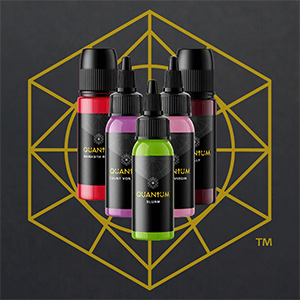
Black & Gray: If your specialty is black and gray realism, Quantum Gray Wash provides long-lasting, consistent, and predictable results for shading your floral tattoos.
Red: The most iconic color for roses, red tattoo ink remains a popular choice for floral tattoos. For the traditional, go for Candy Apple, a crimson red tattoo ink with blue undertones. On the other hand, Telly offers a rich wine-red alternative.
ink: For artists who use pink tattoo ink often, the Quantum Originals Pink Tattoo Ink 8 Color Set is indispensable. However, there are a few individual pink tattoo inks that are standouts for creating floral tattoos. For pink rose tattoos with a touch of the traditional, Mamasita Rosita is an excellent choice. This reddish rose pink tattoo ink adds a touch of pink to the traditional red rose theme. For pastel florals opt for pastel bubblegum pink tattoo ink, Like A Virgin.
Purple: The Quantum Originals Purple Tattoo Ink 8 Color Set offers a great deal of variety for those who see a wide range of options. For lilacs and other lighter florals, Count Von Count lilac purple tattoo ink is an artist favorite.
Yellow: We can't forget sunflowers and daisies! Bumblebee is an outstanding golden yellow tattoo ink, while Yellow Brick Road provides an intense yellow option.
Green: While there are not many green flowers, you are going to need an outstanding color for stems and leaves. For a darker forest green tone of tattoo ink, choose Sherwood Forest. Slurm is your go-to vivid yellow-green tattoo ink.
With these colors and many, many more, Quantum Tattoo Ink has the perfect color to inspire your next floral tattoo. Shop our full selection of color tattoo ink today and follow us on Instagram to see our inks in action on floral and other designs by our Quantum Road Crew.

